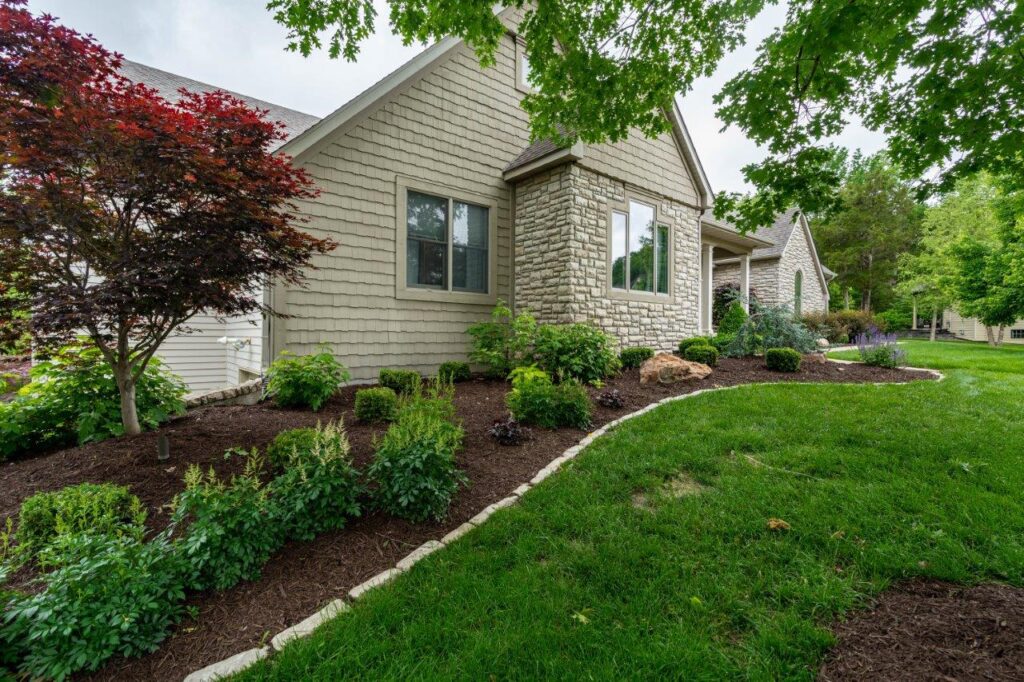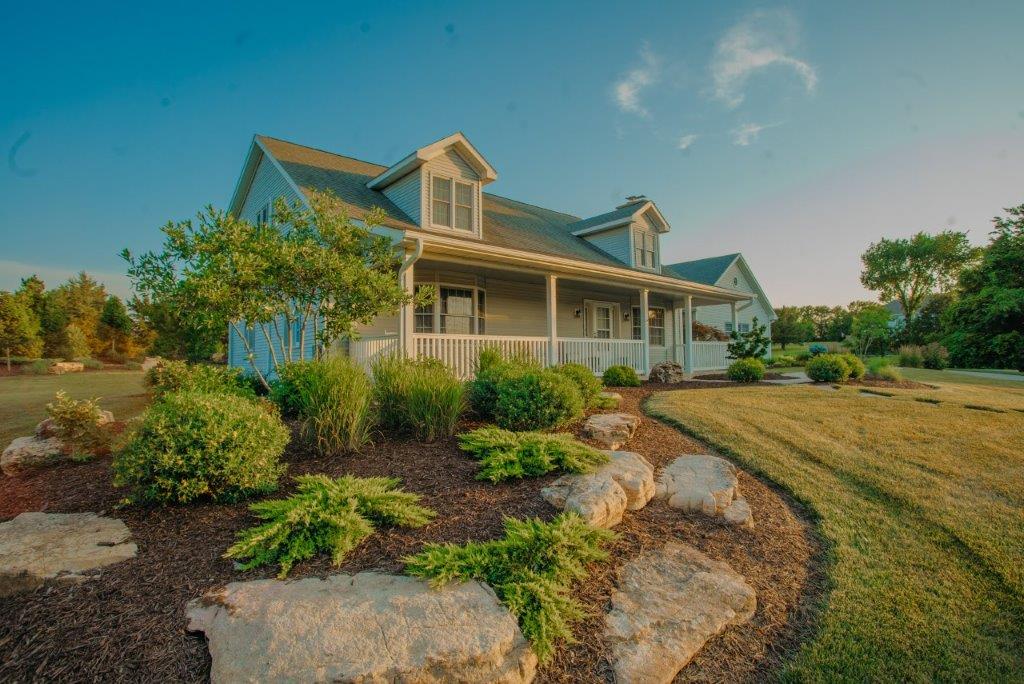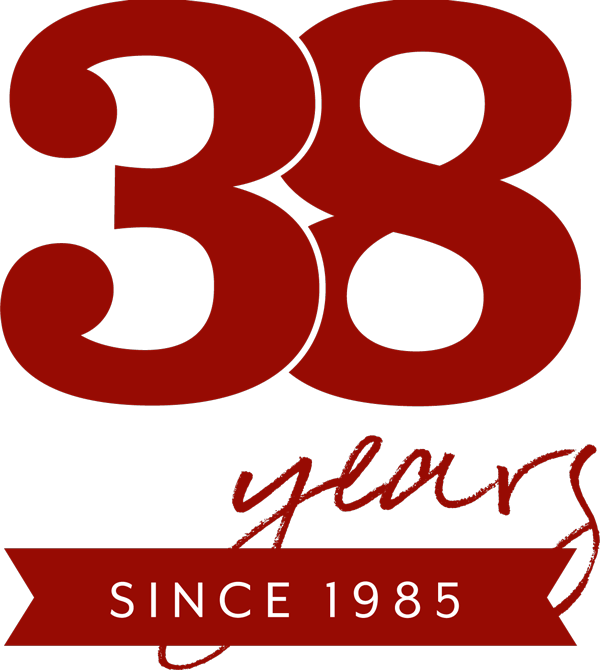When you are creating a space for the new landscape plantings for your home, or simply dressing up existing beds, it is important to define those landscape bed edges from the lawn areas next to them. Creating a nice, clean separation between mulch and turf helps keep the landscape bed and the lawn looking great. When it comes to edging the landscape bed, there are a few standard options that we like to use to define the beds.
A spade cut, or shovel cut, edge is the standard of what we start with to create the bed line. This isn’t a physical type of edging. It is simply a V-trench that is cut to define the bed edge. This cut is simple to create and is fairly maintenance friendly. The trench allows the mulch to be installed at the proper depth at the edge of the bed without it spilling over into the turf. Another benefit is this method does allow a mower deck to go over the top of that edging, eliminating or reducing the need to string trim along the bed. The most maintenance that this edging requires if to rake the mulch back and clean up or recut the edge as need from season to season to keep that line nice and crisp. A spade edge works well if you are using wood mulch. If there is gravel mulch, a physical edge is needed. We also recommend re-edging your beds at least every couple of years before you top dress your mulch in the Spring.
 If a customer is wanting or needing a physical barrier between the mulch and the turf, my preferred material is natural stone edging. Typically, this edging is around four inches by four inches thick and tall, and come in random lengths. These are set as individual pieces to create the bed line. I like for the bottom half of the edging to be installed below grade on the turf side, and the mulch on the back side to be not quite to the top. I think this helps reduce the chance of the edging to roll over if a mower drives over it, but also allows you to see it from the street. However, if a mower does drive over a piece and it moves, they are very easy to get reset in the right orientation. When it comes to appearance of the edging, I think natural stone has the best look compared to concrete edgers you get from a box store.
If a customer is wanting or needing a physical barrier between the mulch and the turf, my preferred material is natural stone edging. Typically, this edging is around four inches by four inches thick and tall, and come in random lengths. These are set as individual pieces to create the bed line. I like for the bottom half of the edging to be installed below grade on the turf side, and the mulch on the back side to be not quite to the top. I think this helps reduce the chance of the edging to roll over if a mower drives over it, but also allows you to see it from the street. However, if a mower does drive over a piece and it moves, they are very easy to get reset in the right orientation. When it comes to appearance of the edging, I think natural stone has the best look compared to concrete edgers you get from a box store.
The last type of edging I’ll discuss is steel edging. Steel edging is a piece of steel that is painted and staked in the ground. Most of the time, I’ll use steel edging if budget is a limitation. Steel edging does take less time to install and costs less for the material than stone edging. A downside to steel edging comes to the damage that can be done if a mower runs over it. If it is hit by a mower and is bent or paint is scuffed up, the entire ten foot or sixteen foot piece has to be replaced.
No matter which option you choose, including landscape bed edging in your renovation is a super important factor that you shouldn’t overlook!
Also seen in COMO Magazine, Dec. 2021

